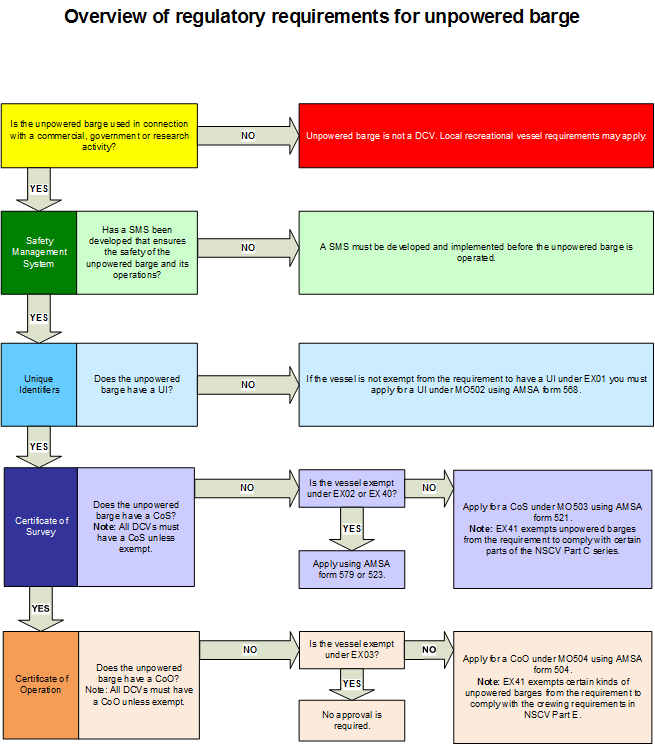An unpowered barge is:
- a vessel that is not propelled by an engine or mechanics
- navigated by a powered vessel that moves it by pushing or towing it.
An unpowered barge may have propulsion that allows it to:
- stay in a fixed position in the water at a work location
- assist while being towed to or from a work location.
An unpowered barge is subject to the national law and is considered to be a domestic commercial vessel if it is being user for a commercial, governmental or research activity. If it is not being used for commercial purposes, it is not considered to be a domestic commercial vessel and may be subject to state recreational requirements.
Access the My Boat system for guidance on how to keep your vessel compliant.
Requirements that apply to domestic commercial vessels
Domestic commercial unpowered barges are required to comply with national law regulations, including:
- General safety duties–this applies to vessel owners, masters, crew, and passengers. You must have a safety management system implemented onboard which details the unpowered barges operations.
- A unique vessel identifier displayed on your vessel.
- Certificate of survey unless you are eligible for Marine Safety (Certificates of survey) Exemption 2017.
- Certificate of operation unless you are eligible for Marine Safety (Certificates of operation) Exemption 2017.
Exemption 41
The Marine Safety (Unpowered barges) Exemption 2017 (No. 2) (Exemption 41) exempts unpowered barges from the requirement to comply with some of the accommodation, safety equipment, communications equipment, and navigation equipment sections of the National Standards for Commercial Vessels (NSCV) part C series. Exemption 41 moves all unpowered barges into a low frequency one in five yearly survey regime and removes the requirement under NSCV Part E to obtain approval to operate the unpowered barge with crewing that is below the core complement.

Note: this page was previously published as fact sheet AMSA 623